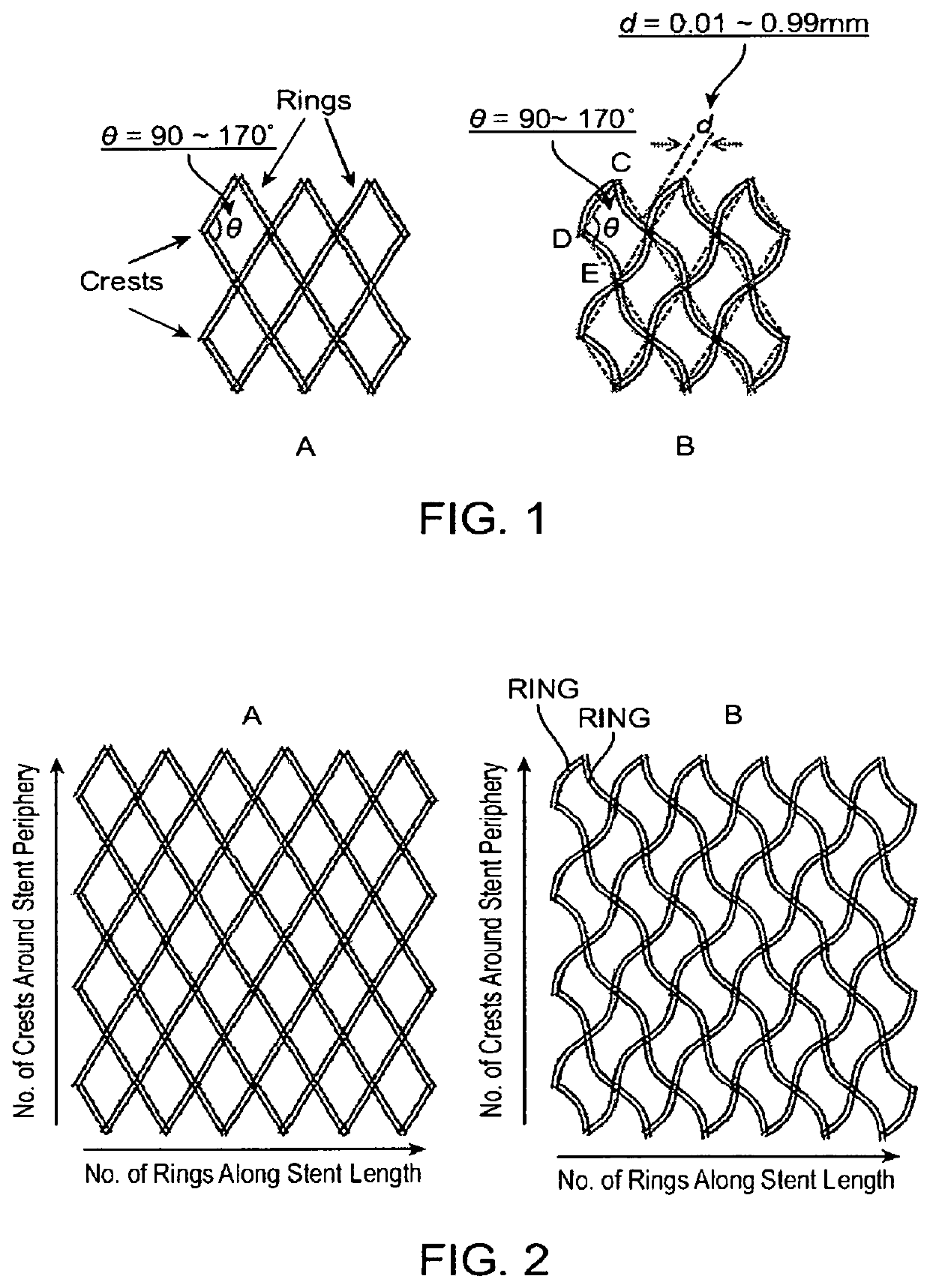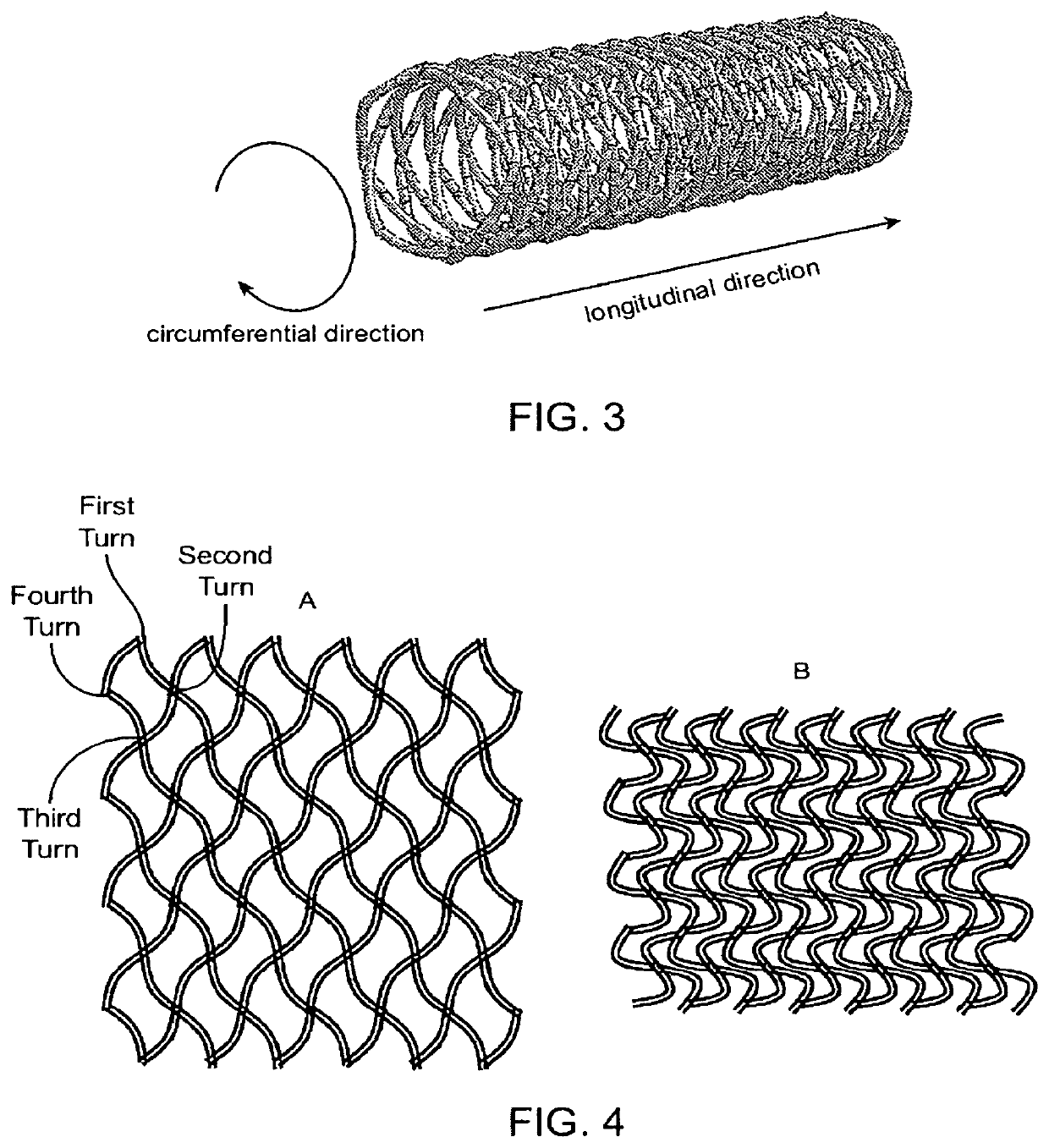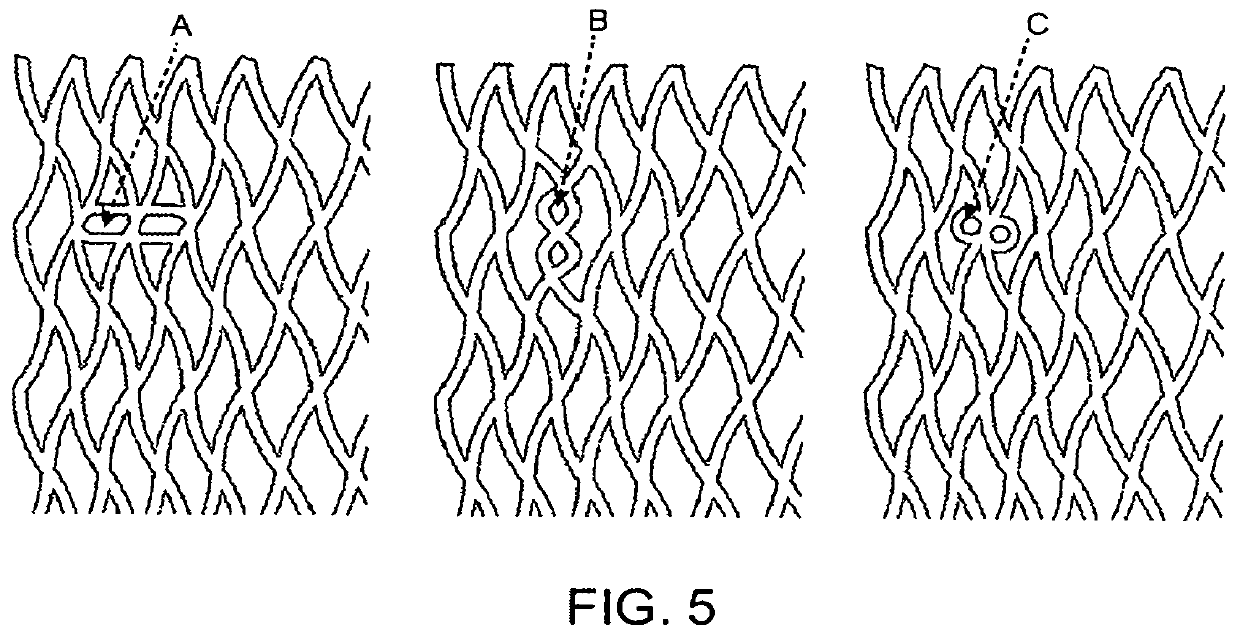Close-cell structured stent, a preparation method and use thereof
a closed-cell, structured technology, applied in the field of medical materials and devices, can solve the problems of stent failure, high radial strength stents, high longitudinal rigidity or lower flexibility, and stents that have high radial strength, and achieve excellent longitudinal flexibility and radial strength
- Summary
- Abstract
- Description
- Claims
- Application Information
AI Technical Summary
Benefits of technology
Problems solved by technology
Method used
Image
Examples
example 1
ring of Peripheral Stents
[0085]Using the 4-axis rapid polymer (RP) stent fabricating apparatus as described in U.S. Patent Application Publication No. 2010 / 0330144A1, stents with curved fiber struts (d=0.16 mm) and non-curved fiber struts and with fiber crossing angles in the longitudinal direction of 90, 140, 145 and 150 degrees were made from poly(L-lactic acid), i.e., PLLA, in sizes of 5 mm in diameter and 36 mm in length. The stents were then crimped onto 5 mm×40 mm×85 cm balloon catheters using the Blockwise Model RJX stent crimping machine set at a final diameter of 2.35 mm. The stents were then expanded by balloon inflation in a water bath at 37 C. The expanded stents were used for the measurement of radial forces using the Blockwise Model TTR2 radial force tester. The results were shown in Table 1.
[0086]
TABLE 1Fiber CrossNumber Angle in theof CrestsNumber of Average LongitudinalAround Fiber Rings StentDirection StentAlong Stent Average Radial Shortening (θ, degree)PeripheryL...
example 2
ring of Coronary Stents
[0088]Using the 4-axis rapid polymer (RP) stent fabricating apparatus as described in U.S. Patent Application Publication No. 2010 / 0330144A1, stents with curved fiber struts (d=0.16 mm) and with fiber crossing angles in the longitudinal direction of 141, 145 and 150 degrees were made from poly(L-lactic acid), i.e., PLLA, in size of 3 mm in diameter and 13 mm in length. The stents were then crimped onto 3 mm×15 mm×135 cm balloon catheters using a Blockwise Model RJX stent crimping machine set at a final diameter of 1.45 mm. The stents were then expanded by balloon inflation in a 37° C. water bath. The expanded stents were then used for the measurement of radial forces using the Blockwise Model TTR2 radial force tester. The results were shown in Table 2.
[0089]
TABLE 2Fiber CrossNumber Angle in theof CrestsNumber of Average LongitudinalAround Fiber Rings StentDirection StentAlong Stent Average Radial Shortening (θ, degree)PeripheryLengthStrength (N / mm)Ratio (%)141...
PUM
| Property | Measurement | Unit |
|---|---|---|
| angle | aaaaa | aaaaa |
| distance | aaaaa | aaaaa |
| crossing angle | aaaaa | aaaaa |
Abstract
Description
Claims
Application Information
 Login to View More
Login to View More - R&D
- Intellectual Property
- Life Sciences
- Materials
- Tech Scout
- Unparalleled Data Quality
- Higher Quality Content
- 60% Fewer Hallucinations
Browse by: Latest US Patents, China's latest patents, Technical Efficacy Thesaurus, Application Domain, Technology Topic, Popular Technical Reports.
© 2025 PatSnap. All rights reserved.Legal|Privacy policy|Modern Slavery Act Transparency Statement|Sitemap|About US| Contact US: help@patsnap.com



